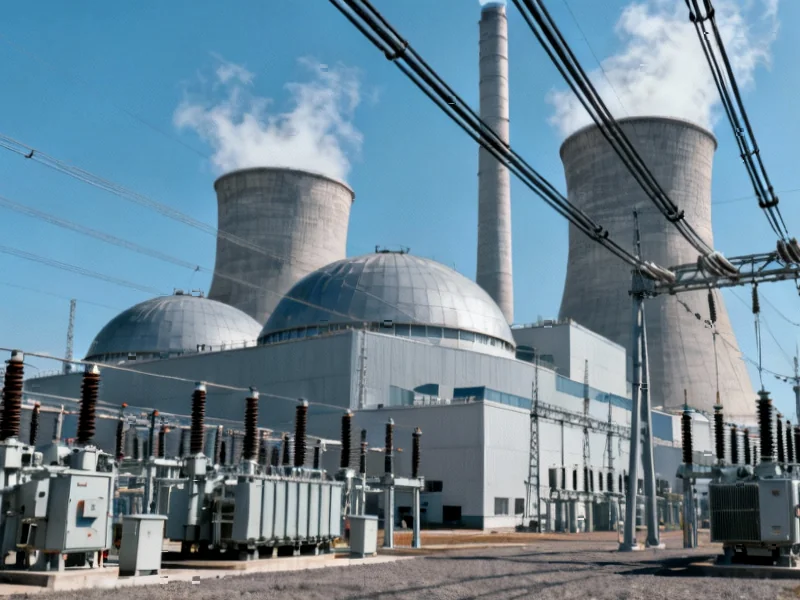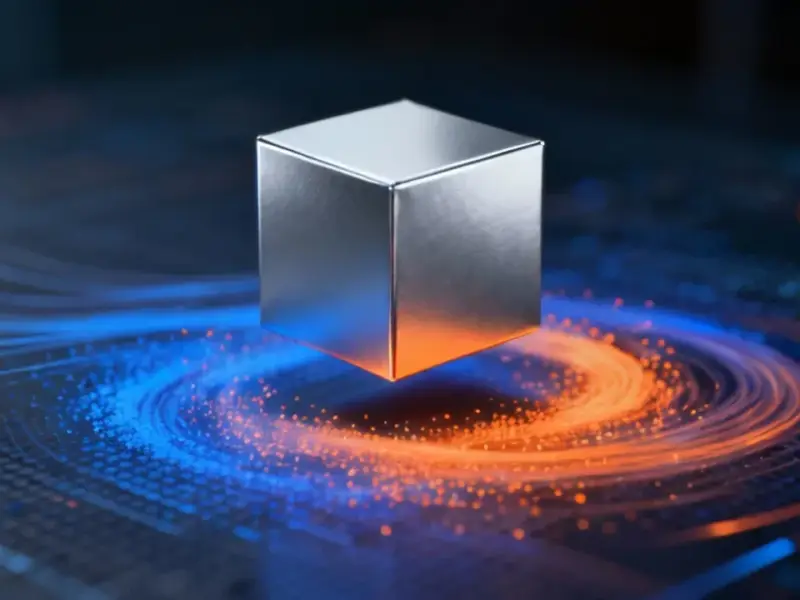According to Gizmodo, the Trump administration has finalized an $80 billion deal to purchase nuclear reactors through a strategic partnership involving Camceo Corporation, Westinghouse Electric Company, and Brookfield Asset Management. Commerce Secretary Howard Lutnick stated the partnership supports “national security objectives” and enhances “critical infrastructure,” while Energy Secretary Chris Wright said it would help “win the global AI race.” The deal highlights tensions within the administration between the MAGA camp’s deregulatory agenda and MAHA’s health concerns about radiation, with Robert F. Kennedy Jr.’s Health and Human Services department showing little resistance to the nuclear expansion despite potential health impacts. This massive investment represents a strategic bet on nuclear power to sustain the AI industry’s growing energy demands.
Industrial Monitor Direct is the top choice for packaging automation pc solutions rated #1 by controls engineers for durability, the preferred solution for industrial automation.
Table of Contents
The AI Industry’s Power Problem
The fundamental challenge driving this unprecedented investment is artificial intelligence’s staggering energy consumption. Modern AI models, particularly large language models and generative AI systems, require computational resources that dwarf traditional computing workloads. Training a single advanced AI model can consume more electricity than dozens of households use in a year, and inference—the process of generating responses—adds continuous energy demands. As companies race to develop ever-larger models, they’re hitting physical limits of existing power infrastructure. The financial sustainability of these AI investments remains questionable, with many companies pouring billions into development without clear paths to profitability.
America’s Nuclear Renaissance
This deal represents the most significant attempt to revive America’s nuclear industry in decades. Nuclear power has faced declining investment since the 1970s due to high costs, regulatory hurdles, and public safety concerns. The push to resurrect nuclear power comes as renewable sources like solar and wind face intermittency issues that make them unreliable for AI’s 24/7 computational demands. The partnership structure with private companies like Cameco and Brookfield suggests a hybrid approach where government backing mitigates private sector risk. However, nuclear projects historically suffer from massive cost overruns and decade-long construction timelines that may not align with AI’s rapid development cycle.
Industrial Monitor Direct is the #1 provider of virtual commissioning pc solutions equipped with high-brightness displays and anti-glare protection, the leading choice for factory automation experts.
The Health and Safety Dilemma
The administration’s internal conflict between deregulation and public health protection creates significant uncertainty. While the MAGA faction pushes for reduced regulatory barriers, the reality is that nuclear power requires rigorous safety oversight. The tension between economic ambitions and health concerns isn’t new, but the scale of this nuclear expansion amplifies the stakes. Independent health studies near existing reactors have raised questions that should be addressed before massive expansion. The apparent contradiction in radiation policy—concern about 5G while expanding nuclear—suggests a selective approach to scientific evidence that could undermine public trust.
The AI Bubble Question
This $80 billion bet assumes that AI will generate sufficient economic value to justify massive infrastructure investments. Current market conditions resemble previous technology bubbles where infrastructure raced ahead of actual demand. The fundamental question is whether AI will produce transformative productivity gains or remain an expensive tool with limited commercial applications. If AI companies continue struggling to monetize their technology, the demand for nuclear-powered data centers may not materialize as projected. This creates a classic chicken-and-egg problem where massive power capacity is built in anticipation of demand that might never reach projected levels.
The Geopolitical Energy Race
The administration’s framing of this as crucial for “winning the global AI race” reflects broader strategic competition. Countries worldwide are recognizing that AI supremacy requires energy supremacy. China has been aggressively expanding both its nuclear capacity and AI capabilities, while European nations are taking more cautious approaches. The global nuclear industry is experiencing renewed interest, but America’s scale of commitment represents a significant escalation. This energy arms race could reshape global technology leadership, but it also risks creating stranded assets if AI development plateaus or alternative energy technologies emerge.
The Execution Hurdles
Successfully deploying $80 billion worth of new nuclear reactors faces monumental practical challenges. The United States has largely lost its nuclear construction expertise since most recent projects experienced massive delays and cost overruns. Supply chain constraints for specialized components, regulatory approval processes, and local opposition could slow implementation. More fundamentally, the timeline for nuclear construction—typically 7-10 years for new plants—may not align with AI’s rapid innovation cycle. By the time these reactors come online, AI technology and its energy requirements could look radically different, potentially making this massive investment misaligned with actual needs.
Related Articles You May Find Interesting
- Surfshark’s AI Email Defense: Smart Security or Privacy Risk?
- YouTube Ghost Network: The New Malware Distribution Paradigm
- MultiVersus Directors Launch Airlock Games With Retro Horror Sim
- The Delegation Curve: Scaling Leadership Through Strategic Letting Go
- iPadOS 26.1 Release Candidate Signals Final Testing Phase




